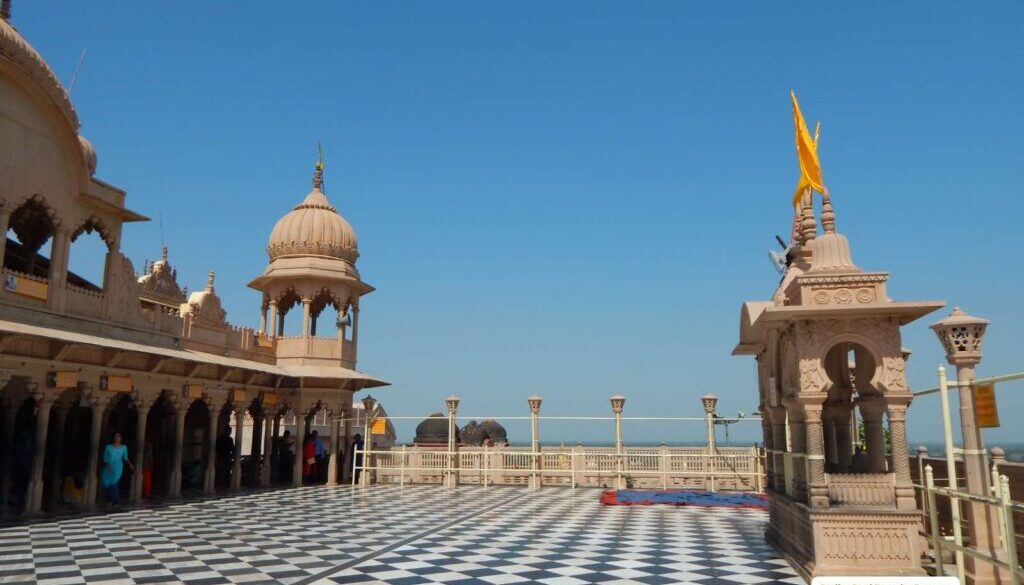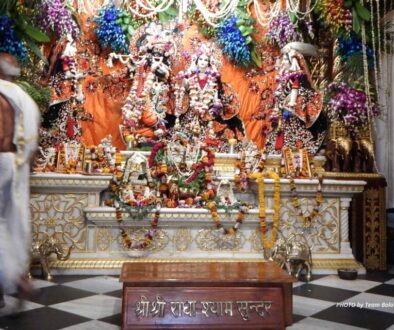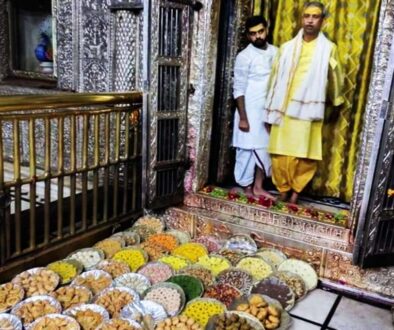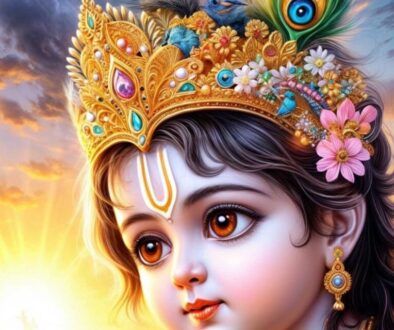Radhashtami: The Divine Birth of Radha Rani
Radhashtami, also known as Radha Ashtami, is one of the most revered festivals in Hinduism, celebrating the birth of Radha Rani, the beloved consort of Lord Krishna. Radha is considered the epitome of divine love and devotion, and her relationship with Krishna is symbolic of the soul’s eternal love for the divine. Celebrated on the eighth day (Ashtami) of the Shukla Paksha in the month of Bhadrapada, Radhashtami is a day of immense spiritual significance. In this blog post, we will explore the origins, rituals, and spiritual importance of Radhashtami, along with the associated legends and cultural practices.
The Significance of Radhashtami
Radhashtami: The Birth of Radha Rani
Radhashtami marks the birth of Radha Rani, who is believed to have incarnated on this day to spread the message of love and devotion. According to Hindu mythology, Radha was born in the village of Barsana to King Vrishabhanu and Queen Kirti. Her birth is celebrated with great fervor in various parts of India, especially in Vrindavan, Barsana, and Mathura, where devotees gather to worship Radha and Krishna together.
Radha Rani: The Embodiment of Love and Devotion
Radha is often described as the personification of pure, selfless love. Her devotion to Krishna is considered the highest form of Bhakti (devotion) in Hindu philosophy. Radha’s love for Krishna transcends the material world and symbolizes the soul’s eternal longing for union with the divine. Her role in Krishna’s life is not just that of a lover but also of a spiritual guide, showing the path of devotion to all beings.
The Legends Surrounding Radhashtami
The Birth Story of Radha
The birth of Radha is surrounded by many mystical stories. One popular legend states that Radha was born as a golden light and appeared as a beautiful child in a lotus in the Yamuna River. King Vrishabhanu discovered her while performing his morning prayers and took her as his daughter. It is believed that Radha was born blind, but when Krishna first saw her, her eyes opened, symbolizing the awakening of divine love.
Radha and Krishna: The Eternal Love Story
The love story of Radha and Krishna is timeless and holds a special place in the hearts of devotees. Their relationship is not just a romantic tale but a deep spiritual bond that represents the union of the individual soul (Jiva) with the supreme consciousness (Brahman). Radha’s unwavering devotion to Krishna is seen as the highest form of Bhakti Yoga, where the devotee surrenders completely to the divine will.
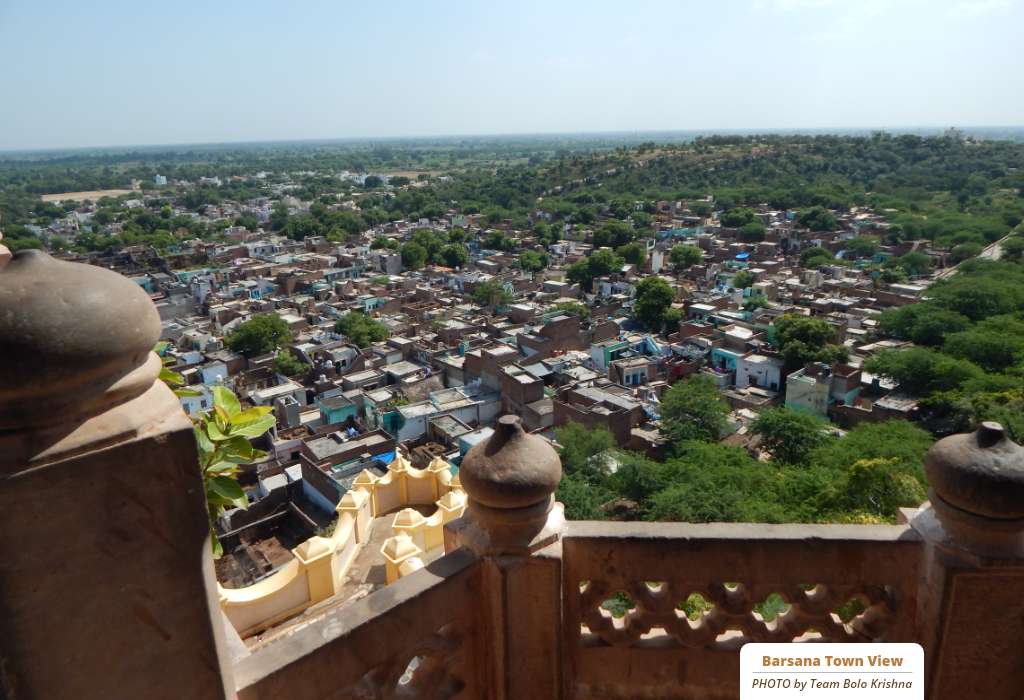
How Radhashtami is Celebrated
Rituals and Traditions
Radhashtami is celebrated with great enthusiasm and devotion, especially in North India. Devotees observe a fast on this day and offer special prayers to Radha and Krishna. The idols of Radha and Krishna are adorned with beautiful clothes and jewelry, and special offerings like sweets, fruits, and flowers are made. Temples, especially in Vrindavan and Barsana, are decorated with flowers and lights, and devotees sing devotional songs (bhajans) dedicated to Radha and Krishna.
The Role of Vrindavan and Barsana in Radhashtami Celebrations
Vrindavan and Barsana, the two places most closely associated with Radha and Krishna, are the focal points of Radhashtami celebrations. In Barsana, the birthplace of Radha, a grand procession is held, where the idol of Radha is carried in a palanquin and devotees sing and dance in her honor. In Vrindavan, special prayers and rituals are conducted in temples like Banke Bihari Temple and Radha Raman Temple, attracting thousands of devotees from around the world.
Fasting and Spiritual Practices
Fasting on Radhashtami is considered highly auspicious. Devotees fast from sunrise to sunset, and some even observe a Nirjala fast (without water). The fast is broken after performing the evening aarti (ritual of light) and offering prayers to Radha and Krishna. Many devotees also engage in reading and reciting Radha’s stories and chanting the Radha-Krishna mantra to deepen their spiritual connection.
The Spiritual Importance of Radhashtami
Bhakti Yoga: The Path of Devotion
Radhashtami is deeply connected with the concept of Bhakti Yoga, which emphasizes devotion as a means of attaining spiritual enlightenment. Radha’s unwavering love and devotion to Krishna serve as an inspiration for all devotees to cultivate a pure and selfless love for the divine. Celebrating Radhashtami is not just about participating in rituals but also about understanding the essence of Bhakti and applying it in daily life.
The Symbolism of Radha and Krishna’s Love
The love between Radha and Krishna is symbolic of the eternal bond between the soul and the supreme. Radha represents the soul that is in constant search of the divine, while Krishna symbolizes the divine consciousness that resides in all beings. Their love story teaches us about the importance of surrender, devotion, and the realization that true happiness lies in union with the divine.
The Cultural Impact of Radhashtami
Radhashtami in Art and Literature
Radha and Krishna’s love story has been a source of inspiration for countless poets, artists, and musicians throughout history. Many classical and folk songs, dances, and paintings depict the divine love of Radha and Krishna, celebrating their eternal bond. Radhashtami is often the occasion for special performances of Ras Leela, a traditional dance-drama that narrates the stories of Radha and Krishna.
The Role of Radhashtami in Modern Times
In today’s world, Radhashtami continues to be a festival that brings people together in a spirit of love and devotion. It serves as a reminder of the timeless values of compassion, selflessness, and spiritual love. Whether celebrated in grand temples or in the quiet devotion of one’s home, Radhashtami offers an opportunity to reconnect with the divine and reflect on the deeper meaning of life.
The Connection Between Radhashtami and Govardhan Hill
Radhashtami is not only a celebration of Radha Rani’s divine birth but also deeply intertwined with the sacred land of Braj, particularly the Govardhan Hill. Govardhan, a revered site in Hinduism, holds a special place in the Radha-Krishna lore. It is believed that Radha and Krishna spent a significant amount of time together in the vicinity of Govardhan, engaging in divine pastimes that are celebrated by devotees to this day.
Govardhan Hill: A Symbol of Krishna’s Divine Protection
Govardhan Hill, often referred to as “Giriraj” (King of Mountains), is famous for the episode where Lord Krishna lifted the hill on his little finger to protect the inhabitants of Braj from the wrath of Indra, the king of gods. This event, known as Govardhan Puja, is celebrated with great devotion during the festival of Diwali. However, its connection to Radhashtami lies in the divine pastimes that Radha and Krishna shared on and around this hill.
The Govardhan Parikrama During Radhashtami
One of the significant rituals performed by devotees during Radhashtami is the Govardhan Parikrama, a sacred circumambulation of the Govardhan Hill. Pilgrims walk around the hill, often covering a distance of about 21 kilometers, while singing devotional songs and chanting the names of Radha and Krishna. This act is believed to bring immense spiritual merit, as it symbolizes the devotee’s dedication and surrender to the divine.
Radha Kund and Shyam Kund: Sacred Spots Near Govardhan
Located near Govardhan Hill are two sacred ponds, Radha Kund and Shyam Kund, which are of great spiritual significance to devotees. Radha Kund is believed to be the place where Radha bathed and performed her pastimes with Krishna. It is considered the holiest of all holy places, and a dip in Radha Kund on Radhashtami is believed to cleanse all sins and bring the blessings of Radha Rani.
During Radhashtami, thousands of devotees gather at Radha Kund to perform special rituals and prayers. The atmosphere is filled with devotion as people offer flowers, milk, and sweets to the sacred pond. The celebration at Radha Kund is an extension of the Radhashtami festivities, emphasizing the deep connection between Radha and the land of Braj.
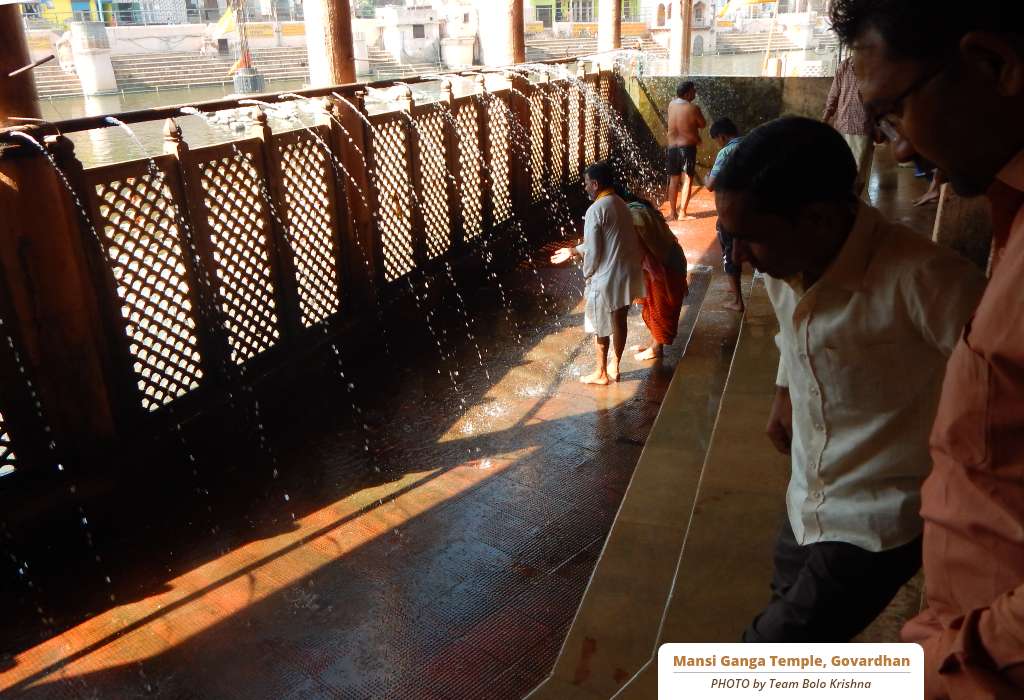
The Role of Govardhan in Radha-Krishna Leelas
Govardhan Hill is not just a physical landmark but a spiritual symbol in Radha-Krishna leelas (divine pastimes). It is said that Radha and her friends often met Krishna at Govardhan, where they engaged in playful exchanges that symbolize the joy and purity of divine love. These pastimes are celebrated in various art forms, including Ras Leela performances, which are particularly popular during Radhashtami.
Celebrating Radhashtami at Govardhan
The celebration of Radhashtami at Govardhan is marked by a sense of deep reverence and joy. Devotees from all over the world flock to this sacred site to participate in the rituals and experience the divine energy that pervades the atmosphere. The temples around Govardhan are beautifully decorated, and special aartis (rituals of light) are performed in honor of Radha Rani. The day is spent in prayer, singing bhajans, and reflecting on the divine love between Radha and Krishna.
Govardhan as a Symbol of Devotee Protection and Grace
The association of Radhashtami with Govardhan highlights the protective and nurturing aspects of divine love. Just as Krishna lifted Govardhan to shield the people of Braj, devotees believe that Radha’s love and devotion can protect and guide them through the challenges of life. Govardhan stands as a testament to the enduring love between Radha and Krishna and the grace they bestow upon their devotees.
Radhashtami is an opportunity to connect with the sacred geography of Braj, particularly Govardhan Hill. The rituals and traditions associated with Govardhan during Radhashtami add a deeper dimension to the festival, emphasizing the spiritual bond between the divine couple and the devotees. By participating in the Govardhan Parikrama, visiting Radha Kund, or simply meditating on the pastimes of Radha and Krishna, devotees can experience the profound love and devotion that Radhashtami represents.
Conclusion
Radhashtami is more than just a celebration of Radha Rani’s birth; it is a festival that embodies the essence of divine love and devotion. As devotees come together to honor Radha and Krishna, they are reminded of the importance of Bhakti and the eternal connection between the soul and the divine. By observing Radhashtami, we not only pay tribute to Radha’s unparalleled devotion but also seek to cultivate the same love and dedication in our own spiritual journey. Whether through fasting, prayer, or simply reflecting on the teachings of Radha and Krishna, Radhashtami offers a profound opportunity to deepen our understanding of love, devotion, and the path to spiritual enlightenment.

